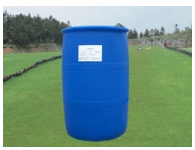The three biosurfactants have different removal effects on heavy metals: 0.5% rhamnolipid has a better removal effect on Cu with a removal rate of 65%; 4% sophorite has a better removal effect on Zn, which is 60%; while safantin has no significant effect on both, the removal rates are only 15% and 6%. The changes of speciation of heavy metals in sediments were also studied. Rhamnolipid and savantoin mainly removed organically bound Cu, and sophorite mainly removed oxide bound and carbonate bound Zn. This study also confirmed that the method of washing sediment with biosurfactant to remove heavy metals is feasible.

The use of surfactants is to reduce the surface tension of the ink. When the contact angle between the ink drop and the paper is greater than 140, the higher the ink surface tension, the higher the contact angle. In addition, the lower the surface tension of the ink is, the more comprehensive coverage of the writing matrix can be obtained to improve the quality of writing and printing. However, it is difficult to form small and uniform ink drops when the surface tension is too low. Generally, the surface tension should be greater than 35 Mn / m.
The molecular structure of amphoteric surfactants has hydrophobic and hydrophilic groups. The properties related to surface tension can be adjusted by changing the structure of hydrophilic part of surfactant molecule. For example, polymethylsiloxane (silicone resin) is more effective, and the unique surface activity of silicone oil is due to the hydrophobic Si - O group being shielded by hydrophilic methyl groups.
Fluorinated alkyl group can further reduce the surface tension, fluorine atom has the appropriate covalent radius to shield the carbon chain from space, and the fluoroalkyl group has little interaction with other groups. Fluorosurfactants can be seen from the example of perfluorooctanoic acid [n - c7f15cooh], where the mass fraction of perfluorooctanoic acid is 0101%, the surface tension of water decreases from 72 Mn / m to 1512 Mn / m.
In solution, surfactant molecules migrate to the surface of the solvent, reducing the surface tension (water or other solvents). When the surfactant molecular orientation, the polar group is directly toward the solvent surface, and the hydrocarbon chain extends into the air. This distribution makes the surface force balance, and then the surface tension decreases. The surface tension keeps constant after decreasing to the critical micelle concentration. The surfactant molecules are distributed on the surface of the solvent until the monolayer structure is formed. The surface tension phenomenon helps to design effective inks. Because the pigment coating process and these parameters have a lot to do. Many defects in the colored layer can be attributed to the surface tension problem.